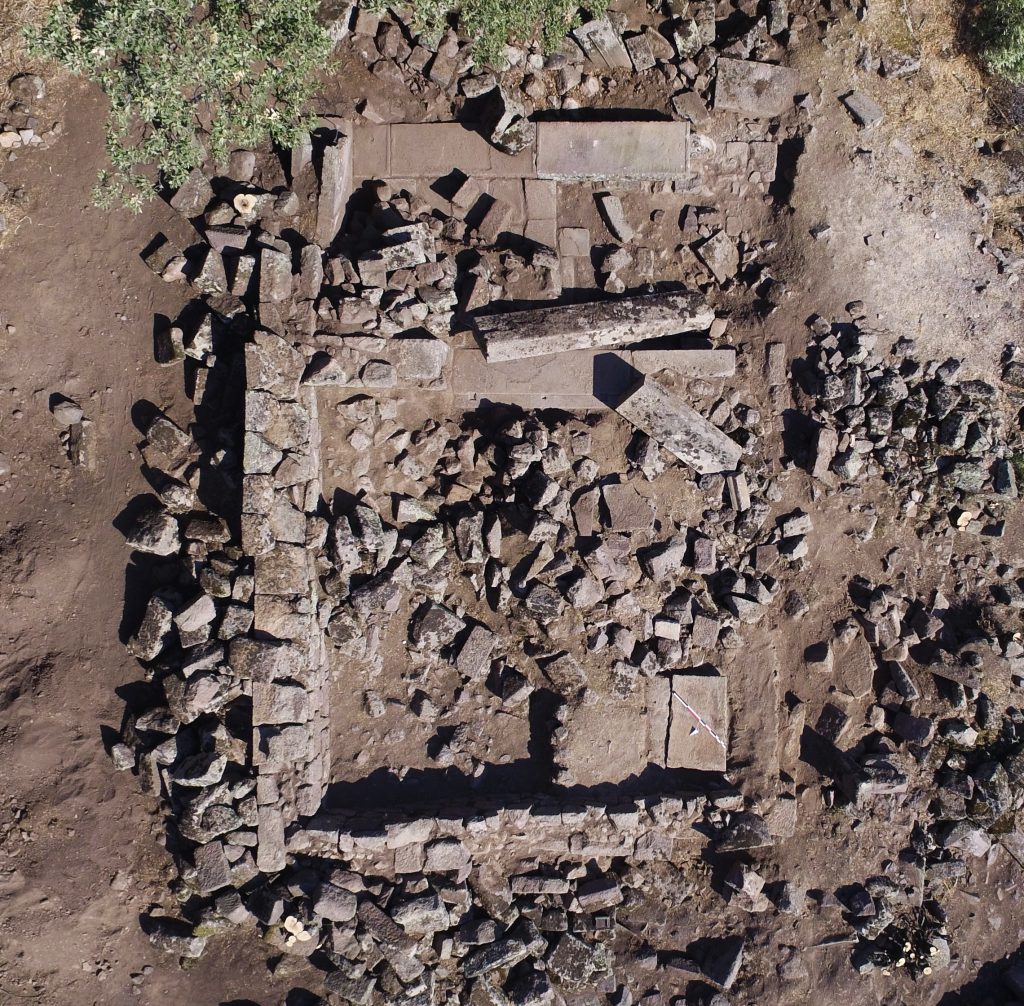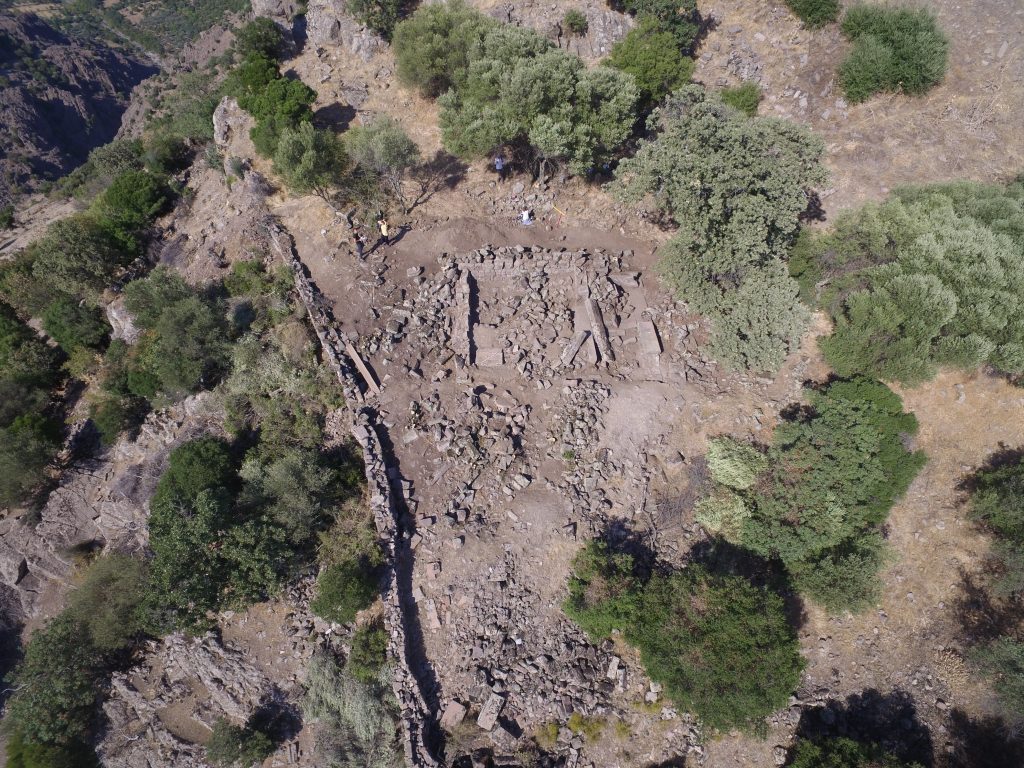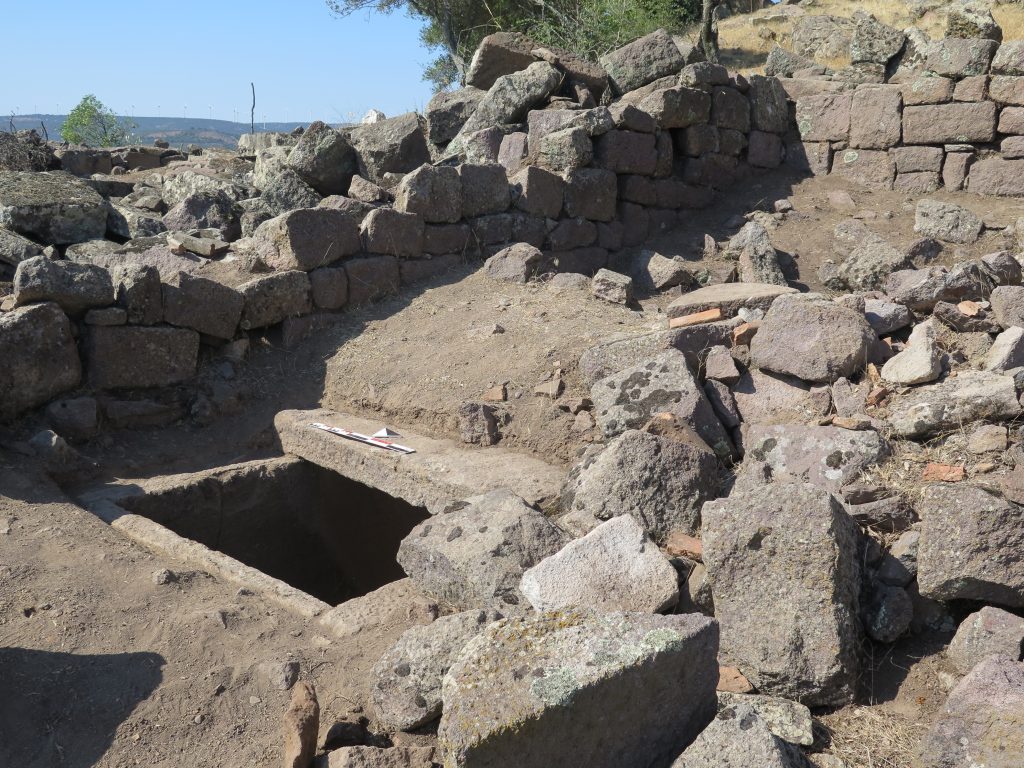
A temple is located at the west of the Theater stage building on the north end of the southwestern terrace of the city. The area is bordered by a steep slope to the north of the bedrock and to the west. It was identified as the Temple of Demeter and Kore based on an inscription found in the area in 1886, by German researchers. The expression “Demeter, Kore and other gods worshiped in the temple” in the inscription dated to the 2nd century BCE, indicates that the temple was for not only Demeter and Korea but also for other deities.

The temple’s plan is templum in antis and outer diameters of the building are 6,50×9,50 m. The front of the temple oriented on the northwest-southeast axis, faces southeast. Two sections of the temple are a square naos measuring 5×5 m and a pronaos measuring 2,40×5 m in front of the naos. There is a bothros inside the naos, close to the northwest wall. Bothros was built with stone blocks and covered with fine-worked stone slabs, in the form of a sarcophagus. In-situ finds could not be found inside 2,45×1,25 m bothros, which was destroyed by illegal excavation. Examples like the bothros can be seen in the Temple of Demeter-Kore in Priene.

Roof tiles were found in the rubble on the stone floor of the pronaos during the cleaning work. The temple must have a roofing made of terracotta tiles. Also, a geison fragment associated with the structure was found in the debris at Pronaos. The geison with its mutulus without guttae engravings shows the characteristics of the early Hellenistic Period architecture

Miniature vessel fragments that were scattered around during illegal excavations were found. These vessels seem to have been taken out of bothros. Most of the finds consist of miniature hydria pieces among the other finds, amphoriskos and kernos fragments. Similar groups of finds were also found in the Demeter temples in Rhodos, Caunos, Miletos, Kos, Priene and Iassos.
